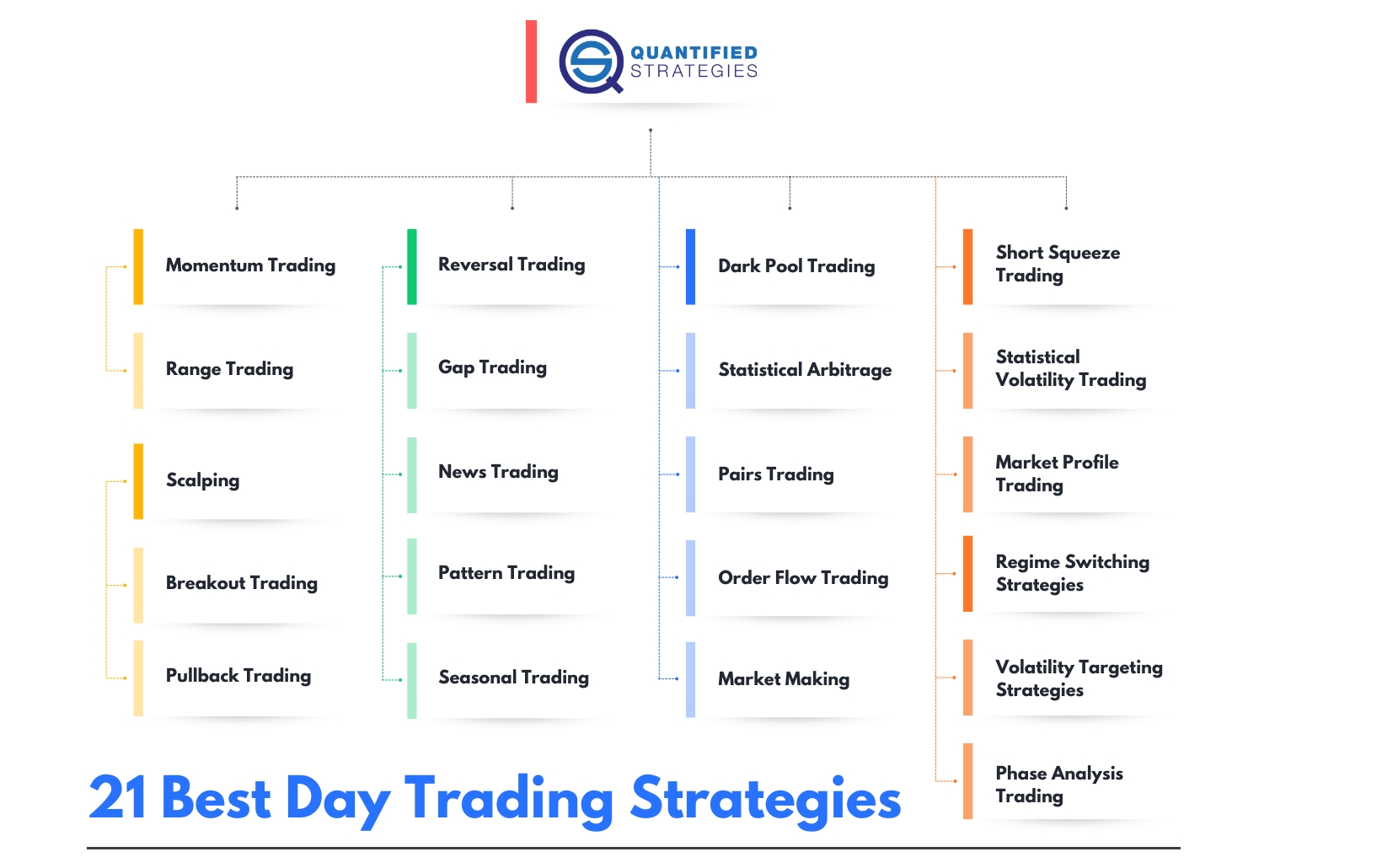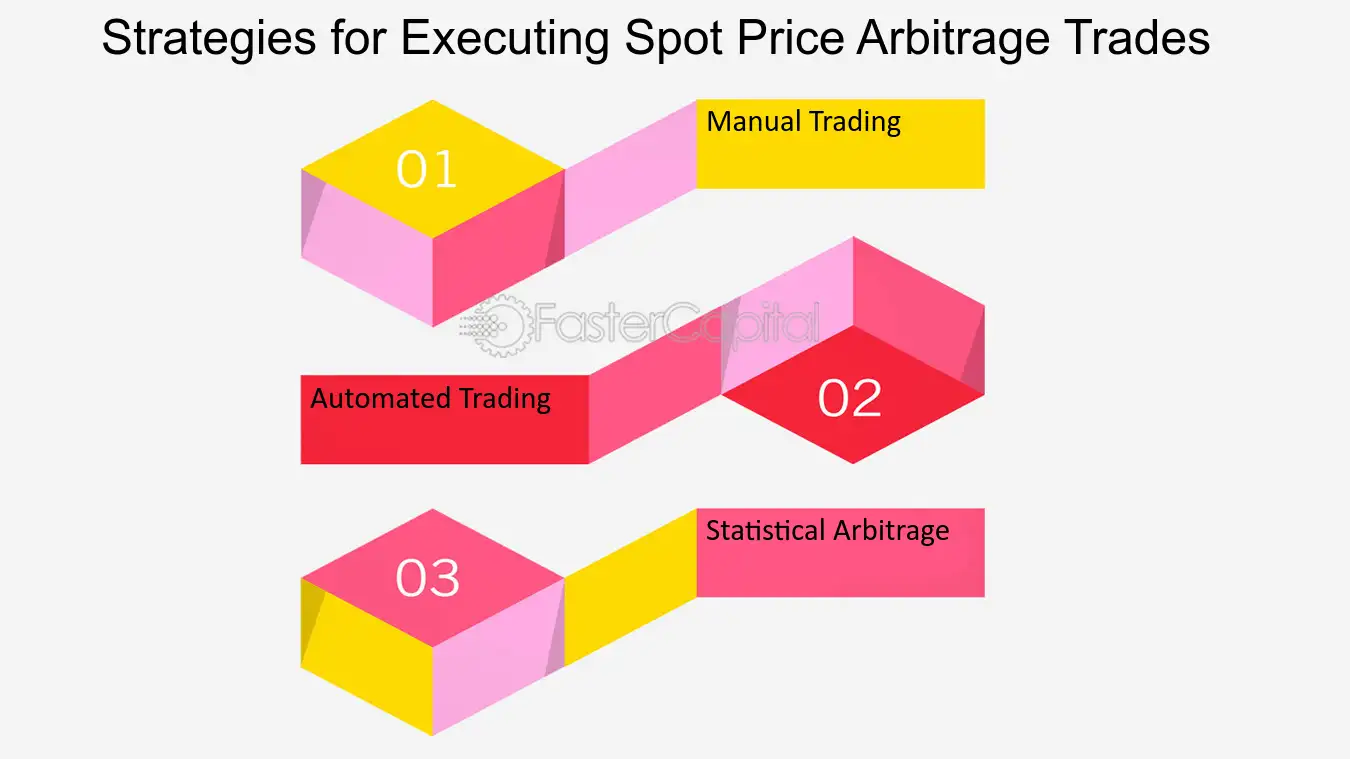Did you know that some traders can execute a trade in the time it takes to say "arbitrage"? In the fast-paced world of day trading, arbitrage techniques offer opportunities to profit from price discrepancies across markets. This article dives into the essentials of day trading arbitrage: defining the concept, exploring key strategies, and highlighting tools for identifying lucrative opportunities. We'll also address the differences between statistical and traditional arbitrage, the importance of market efficiency, and the nuances of pairs trading. Additionally, we’ll discuss risks, transaction costs, and effective capital management. Whether you're eyeing triangular arbitrage in forex or seeking to develop a robust trading plan, DayTradingBusiness equips you with the knowledge to navigate this dynamic landscape.
What is day trading arbitrage and how does it work?
Day trading arbitrage involves exploiting price differences of the same asset across different markets or platforms. Traders buy low in one market and sell high in another, profiting from the spread. Common techniques include:
1. Spatial Arbitrage: Buying an asset on one exchange where the price is lower and selling it on another where the price is higher.
2. Statistical Arbitrage: Using algorithms to identify price discrepancies based on statistical models, often involving pairs of correlated assets.
3. Triangular Arbitrage: Involves three currencies; traders exploit discrepancies in exchange rates between them.
4. Merger Arbitrage: Buying shares of a company being acquired at a lower price and selling them at a higher price once the deal closes.
These techniques require quick execution and often involve significant transaction costs.
What are the key types of arbitrage strategies in day trading?
The key types of arbitrage strategies in day trading include:
1. Statistical Arbitrage: Exploiting price discrepancies among correlated assets through quantitative models.
2. Merger Arbitrage: Buying shares of a target company in a merger while shorting the acquirer’s stock to profit from the spread.
3. Triangular Arbitrage: Taking advantage of price differences in currency pairs by converting one currency to another through a third currency.
4. Risk Arbitrage: Betting on the successful completion of mergers or acquisitions, balancing risk versus reward based on deal conditions.
5. Cross-Market Arbitrage: Identifying price differences for the same asset across different markets, buying low and selling high simultaneously.
Each strategy focuses on exploiting inefficiencies to generate profit within a short time frame.
How can I identify arbitrage opportunities in the market?
To identify arbitrage opportunities in day trading, monitor price discrepancies between different exchanges or markets for the same asset. Use real-time data feeds to spot these differences quickly. Analyze correlated assets; if one moves significantly, check if the other hasn't yet reacted. Employ statistical analysis to find mispriced securities. Set alerts for specific price levels and use trading bots for faster execution. Keep an eye on news and market events that may cause temporary inefficiencies.
What tools and software are best for day trading arbitrage?
The best tools and software for day trading arbitrage include:
1. Trading Platforms: Thinkorswim, Interactive Brokers, and MetaTrader for executing trades quickly.
2. Arbitrage Bots: HaasOnline and Gunbot for automating trading strategies.
3. Market Data Feeds: Bloomberg Terminal or Eikon for real-time market data.
4. Analysis Tools: CoinMarketCap and TradingView for price comparisons and charts.
5. API Access: Alpaca and Binance for direct access to market data and executing trades programmatically.
6. Risk Management Software: Riskalyze for managing and assessing risk in your arbitrage strategies.
These tools help identify price discrepancies and execute trades efficiently.
How does statistical arbitrage differ from traditional arbitrage?
Statistical arbitrage relies on mathematical models and algorithms to identify pricing inefficiencies among related assets, often using historical data to predict price movements. Traditional arbitrage, on the other hand, takes advantage of price discrepancies between different markets or assets, usually requiring simultaneous buying and selling to lock in profits. While statistical arbitrage may involve holding positions for longer periods based on statistical analysis, traditional arbitrage typically seeks immediate profit from price differences.
What role does market efficiency play in arbitrage trading?
Market efficiency is crucial in arbitrage trading because it determines the availability of price discrepancies. In an efficient market, prices reflect all available information, making it harder to find arbitrage opportunities. Traders rely on inefficiencies to exploit mispriced assets quickly before the market corrects them. Techniques like statistical arbitrage or pairs trading take advantage of these fleeting inefficiencies. The faster a trader can identify and act on these discrepancies, the more successful the arbitrage strategy will be.
How can I use pairs trading as an arbitrage strategy?
To use pairs trading as an arbitrage strategy, start by selecting two correlated assets, like stocks in the same sector. Monitor their price relationship; if one stock deviates significantly from the other, the strategy involves going long on the undervalued stock and short on the overvalued one.
Set a target spread for closing the positions when the prices converge. Use statistical analysis to determine the strength of the correlation and historical price patterns. Ensure to manage risk with stop-loss orders and position sizing. This approach capitalizes on temporary mispricings, aiming for profit as the prices realign.
What are the risks associated with day trading arbitrage?
Day trading arbitrage carries several risks, including:
1. Market Volatility: Rapid price changes can lead to losses if trades aren’t executed quickly.
2. Liquidity Issues: Insufficient liquidity can prevent you from entering or exiting positions at desired prices.
3. Execution Risk: Delays or failures in trade execution can result in missed opportunities or unexpected losses.
4. Technology Failures: System outages or glitches can disrupt trading strategies and lead to financial losses.
5. Transaction Costs: High fees from frequent trades can erode profits, especially in low-margin scenarios.
6. Regulatory Risks: Changes in regulations can impact trading strategies and profitability.
7. Over-leverage: Using margin can amplify losses, risking greater capital than initially intended.
Understanding these risks is crucial for anyone engaging in day trading arbitrage.
How do transaction costs impact arbitrage profits?
Transaction costs reduce arbitrage profits by eating into the price differences that traders aim to exploit. High fees can turn potential gains into losses, making it crucial to factor in these costs when executing trades. Efficient strategies, like using limit orders or trading in low-fee environments, help mitigate this impact. Overall, lower transaction costs enhance the profitability of common day trading arbitrage techniques.
What are the best markets for day trading arbitrage?

The best markets for day trading arbitrage include forex, cryptocurrencies, and equities. In forex, exploit price differences between currency pairs across different brokers. For cryptocurrencies, look for discrepancies on exchanges like Binance and Coinbase. In equities, focus on stocks with high volatility and multiple listings, such as ADRs. Additionally, consider options markets for efficient pricing gaps. Always monitor transaction costs to ensure profitability.
Learn about Best Markets for Day Trading Arbitrage
How can I develop a successful arbitrage trading plan?
To develop a successful arbitrage trading plan, start by selecting markets with price discrepancies, such as stocks, cryptocurrencies, or forex. Identify tools and platforms for real-time data analysis to spot arbitrage opportunities quickly.
Next, set clear entry and exit strategies based on your risk tolerance. Incorporate stop-loss orders to minimize potential losses. Diversify your trades across different assets to spread risk.
Additionally, backtest your strategies using historical data to gauge effectiveness. Monitor transaction costs, as they can eat into profits. Finally, stay updated on market trends and news to adapt your plan as necessary.
Learn about How to Develop a Day Trading Arbitrage Plan
What is triangular arbitrage and how can it be applied in forex?
Triangular arbitrage is a forex trading strategy that exploits discrepancies in currency exchange rates among three currencies. It involves converting one currency to another, then to a third, and finally back to the original currency, aiming to profit from the exchange rate differences.
To apply triangular arbitrage in forex, follow these steps:
1. Identify Currency Pairs: Choose three currencies, e.g., USD, EUR, and GBP.
2. Check Exchange Rates: Look for discrepancies in the cross rates. For instance, convert USD to EUR, then EUR to GBP, and finally GBP back to USD.
3. Execute Trades: If the final amount in USD exceeds your initial investment, execute the trades in quick succession to lock in profits.
This technique requires fast execution and real-time data to capitalize on fleeting opportunities in the market.
How do I spot pricing discrepancies for arbitrage trading?

To spot pricing discrepancies for arbitrage trading, follow these steps:
1. Monitor Multiple Exchanges: Keep track of prices across different platforms in real time. Use trading tools or APIs for quick comparisons.
2. Set Alerts: Use price alert features to notify you when a significant difference occurs between exchanges.
3. Analyze Historical Data: Look for patterns in price movements over time to identify recurring discrepancies.
4. Utilize Arbitrage Bots: Employ automated trading bots that can scan for price differences and execute trades faster than manual methods.
5. Check Fees: Always factor in transaction fees and withdrawal limits, as they can affect profitability.
6. Stay Updated: Follow market news and events that might cause sudden price shifts, leading to potential arbitrage opportunities.
By implementing these techniques, you can effectively identify and capitalize on pricing discrepancies for arbitrage trading.
What is the significance of latency in day trading arbitrage?
Latency in day trading arbitrage is crucial because it directly impacts the speed at which traders can execute trades. Lower latency allows traders to capitalize on price discrepancies between different markets or assets before they vanish. In arbitrage, every millisecond counts; faster execution can mean the difference between profit and loss. High latency can lead to missed opportunities or slippage, reducing potential gains. Therefore, optimizing latency is essential for successful day trading arbitrage strategies.
How can I manage my capital while engaging in arbitrage trading?
To manage your capital while engaging in arbitrage trading, start by setting a clear budget that you can afford to lose. Use only a portion of your capital for each trade, typically 1-2%, to minimize risk. Employ stop-loss orders to limit potential losses on trades that don’t go as planned. Diversify your arbitrage opportunities across different markets or assets to spread risk. Monitor transaction costs closely, as they can eat into profits; choose platforms with lower fees. Regularly review and adjust your strategy based on market conditions to optimize your capital allocation. Finally, keep a disciplined approach, avoiding emotional decisions that can lead to capital mismanagement.
What common mistakes should I avoid in day trading arbitrage?
Avoid these common mistakes in day trading arbitrage:
1. Ignoring Transaction Costs: Always factor in fees; they can erode profits quickly.
2. Overleveraging: Don’t use excessive leverage; it increases risk significantly.
3. Neglecting Market Conditions: Be aware of volatility; it can affect arbitrage opportunities.
4. Failing to Monitor Trades: Stay alert; prices can change rapidly, impacting your strategy.
5. Lack of a Clear Strategy: Have a defined plan; aimlessly trading can lead to losses.
6. Not Using Technology: Utilize trading software to execute trades faster than manual methods.
7. Emotional Trading: Avoid letting emotions dictate your trades; stick to your strategy.
8. Underestimating Research: Always analyze market trends and data before making trades.
Stay disciplined and informed to succeed in day trading arbitrage.
Learn about Common Mistakes in Day Trading Analysis to Avoid
Conclusion about Common Day Trading Arbitrage Techniques
In summary, mastering day trading arbitrage requires a solid understanding of various strategies, market dynamics, and the tools necessary to capitalize on pricing discrepancies. While opportunities exist across different markets, traders must remain vigilant about the risks and transaction costs that can impact profitability. By developing a strategic plan and leveraging resources like those offered by DayTradingBusiness, traders can effectively navigate the complexities of arbitrage trading to enhance their success.
Learn about What Are the Most Common Myths About Day Trading Bots?